Working with Climate Data in R with caladaptR

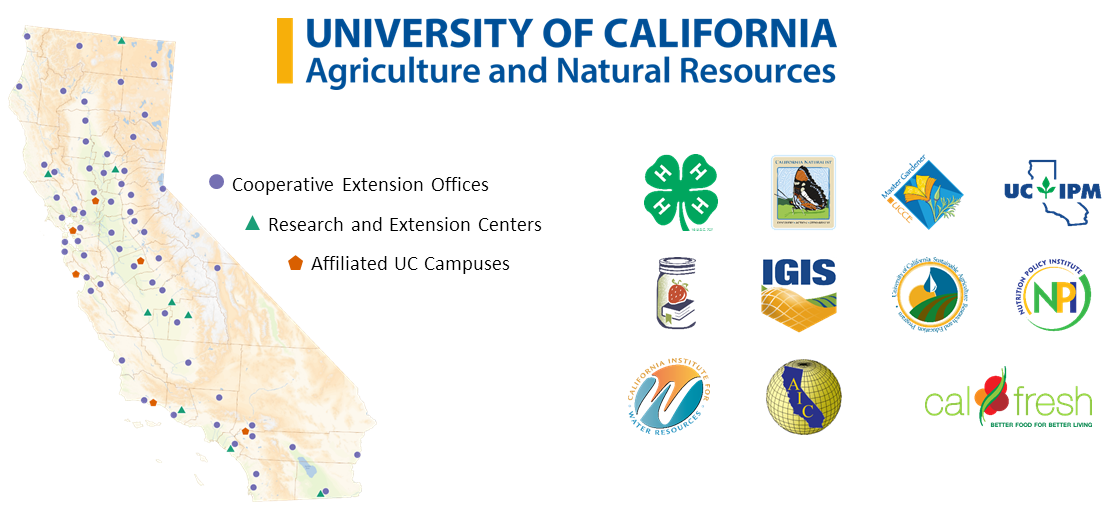

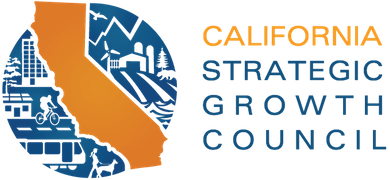
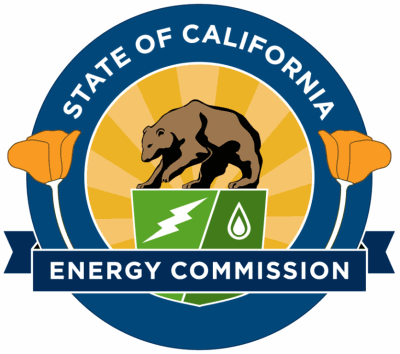
Type of Organization
UC Campus
Familiarity with Climate Change Science
Familiarity with R
Location
1) Get familiar with caladaptR
2) Hands-on practice with:
3) Working Code Recipes

+ foundational concepts
+ code recipes
+ working examples
+ practice
functional pRoficiency!
Cal-Adapt is California’s official portal for peer-reviewed climate data.
Datasets are selected with guidance and priorities from California State agencies.
Modeled Climate Data:
See also: What climate data does Cal-Adapt provide?.
Spatial extent of LOCA downscaled climate data layers:
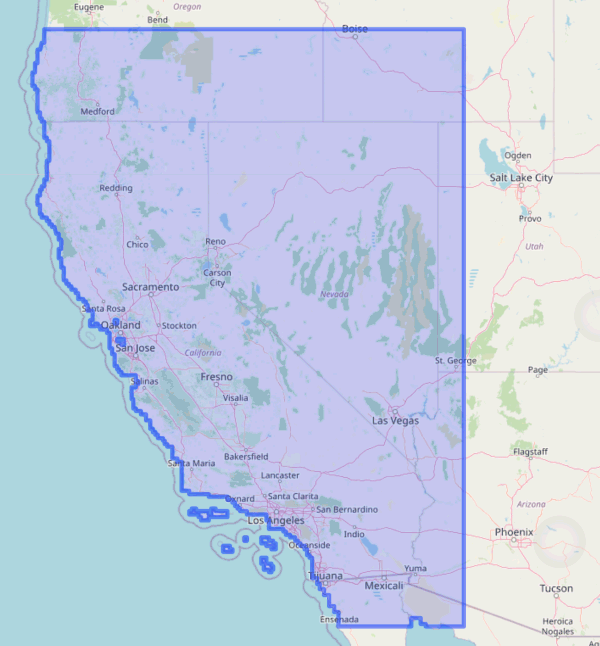




.png)
.png)
.png)
.png)
.png)
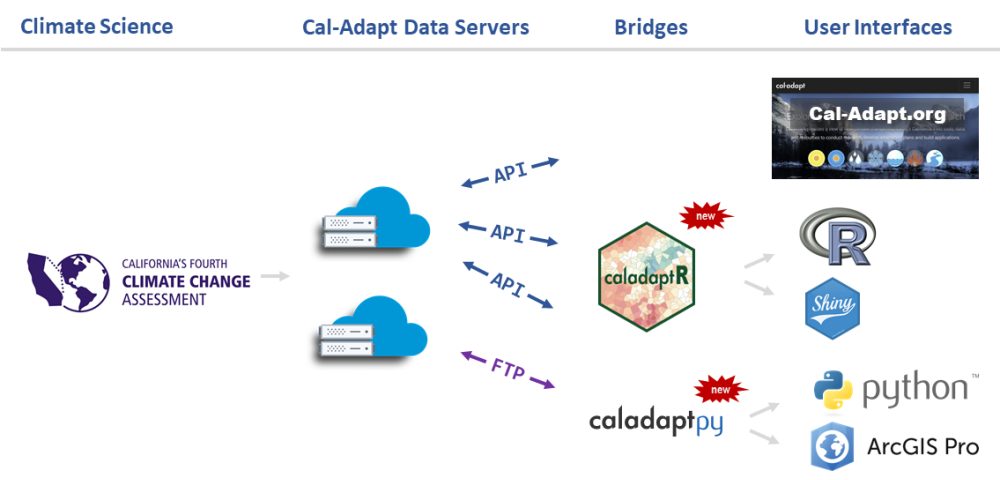
| Feature | Cal-Adapt website | Cal-Adapt FTP | caladapt-py | caladaptR |
| Download rasters | ||||
| Statewide | ✔ | ✔ | ✔ | ✔ |
| User area-of-interest | ✔ | ✔ | ✔ | |
| 10 recommended GCMs | ✔ | ✔ | ✔ | ✔ |
| All 32 GCMs | ✔ | ✔ | ||
| Query features | ||||
| Points (user-provided) | ✔ | ✔ | ✔ | |
| Lines (user-provided) | ✔ | ✔ | ||
| Polygons (user-provided) | ✔ | ✔ | ✔ | |
| Polygons (presets, boundary layers) | ✔ | ✔ | ||
| Other | ||||
| Extract underlying tables from preset charts | ✔ |
More info:
The rolling average of maximum daily temperature will increase by X
Species A, B, & C are most likely to survive in the projected climate envelope.
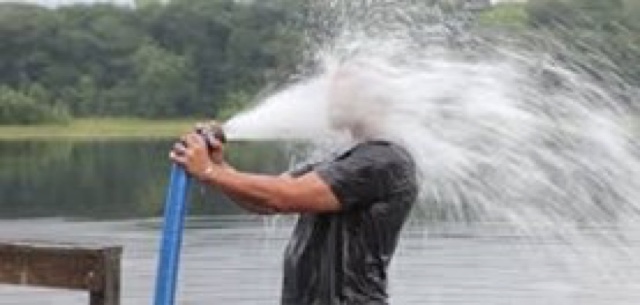
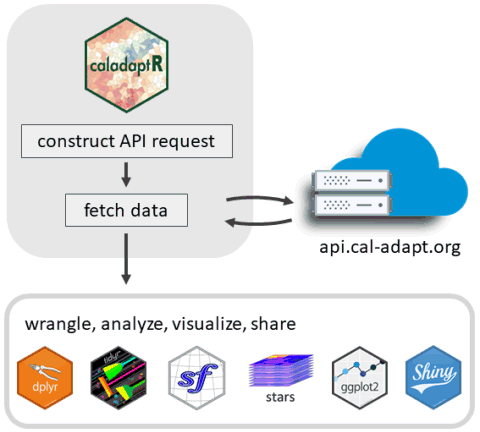
caladaptr is an API client package
caladaptR users need to know:
In general, there are five steps to using caladaptR:
cap1 <- ca_loc_pt(coords = c(-121.4687, 38.5938)) %>%
ca_cvar(c("tasmax", "tasmin")) %>%
ca_gcm(gcms[1:4]) %>%
ca_scenario(scenarios[1:2]) %>%
ca_period("year") %>%
ca_years(start = 2040, end = 2060) An API Request object consists of between 2 and 4 components:
1. Location (required, pick one)
| ca_loc_aoipreset() | Query a preset location(s) |
| ca_loc_pt() | Question point location(s) |
| ca_loc_sf() | Query simple feature location(s) |
2. Raster series dataset
Option 1: Choose downscaled climate projection(s) from Scripps using all 4 of the following constructor functions:
| ca_cvar() | Select the climate variable(s) (i.e., precip, temperature) |
| ca_gcm() | Pick or more of the 10 Global Climate Models |
| ca_period() | Select temporal aggregation period (year, month, day) |
| ca_scenario() | Choose your emission scenario(s) |
Option 2: Pick any of the 830 raster series datasets by their ‘slug’:
| ca_slug() | Select a dataset by its slug |
3. Start & end dates (optional, pick one)
| ca_years() | Specify start & end by year |
| ca_dates() | Specify start & end by date |
4. Options (only required for polygons)
| ca_options() | Spatial aggregation function(s) |
cap1 <- ca_loc_pt(coords = c(-121.4687, 38.5938)) %>% ## specify a location
ca_cvar(c("tasmax", "tasmin")) %>% ## climate variables
ca_gcm(gcms[1:4]) %>% ## GCM(s)
ca_scenario(scenarios[1:2]) %>% ## emission scenarios(s)
ca_period("year") %>% ## temporal aggregation period
ca_years(start = 2040, end = 2060) ## start and end dates## Cal-Adapt API Request
## Location(s):
## x: -121.469
## y: 38.594
## Variable(s): tasmax, tasmin
## Temporal aggregration period(s): year
## GCM(s): HadGEM2-ES, CNRM-CM5, CanESM2, MIROC5
## Scenario(s): rcp45, rcp85
## Dates: 2040-01-01 to 2060-12-31
## ## General issues## - none found## Issues for querying values## - none found## Issues for downloading rasters## - none foundR Notebooks are written in “R Markdown”, which combines text and R code.
.png)
.png)
.png)
.png)
.png)
.png)
.png)
.png)
.png)
Tips
Every time you hit saves, it generates a HTML file in the background.
Remember when you’re in a R Notebook, the working directory is where the Rmd file resides.
Common error:
Error creating notebook: path for html_dependency. Path not found: /tmp/RtmpjR1sPw
![]()
- Knit button → Clear Knitr Cache, or
- Restart RStudio
In Notebook 1, you will:
Getting Help
The Cal-Adapt API server has 11 preset areas of interest (aka boundary layers).
You can query these features without passing a spatial object!
Example:
norcal_cap <- ca_loc_aoipreset(type = "counties",
idfld = "fips",
idval = c("06105", "06049", "06089", "06015")) %>%
ca_gcm(gcms[1:4]) %>%
ca_scenario(scenarios[1:2]) %>%
ca_period("year") %>%
ca_years(start = 2040, end = 2060) %>%
ca_cvar("pr") %>%
ca_options(spatial_ag = "max")Plot an API request to verify the location:
An API request can use a simple feature data frame as the query location (point, polygon, and multipolygon).
Use sf::st_read() to import Shapefiles, geojson, KML, geopackage, ESRI geodatabases, etc.
## Reading layer `pinnacles_bnd' from data source
## `D:\GitHub\cal-adapt\caladaptr-res\docs\workshops\ca_intro_feb22\notebooks\data\pinnacles_bnd.geojson'
## using driver `GeoJSON'
## Simple feature collection with 1 feature and 5 fields
## Geometry type: MULTIPOLYGON
## Dimension: XY
## Bounding box: xmin: -121.2455 ymin: 36.4084 xmax: -121.1012 ymax: 36.56416
## Geodetic CRS: WGS 84Crate an API request:
pin_cap <- ca_loc_sf(loc = pinnacles_bnd_sf, idfld = "UNIT_CODE") %>%
ca_slug("et_month_MIROC5_rcp45") %>%
ca_years(start = 2040, end = 2060) %>%
ca_options(spatial_ag = "mean")
plot(pin_cap, locagrid = TRUE)Fetch data:
Which weekend in February 2070 has the least chance of rain for my retirement party at the San Luis Obispo Country Club?
Wise or unwise?
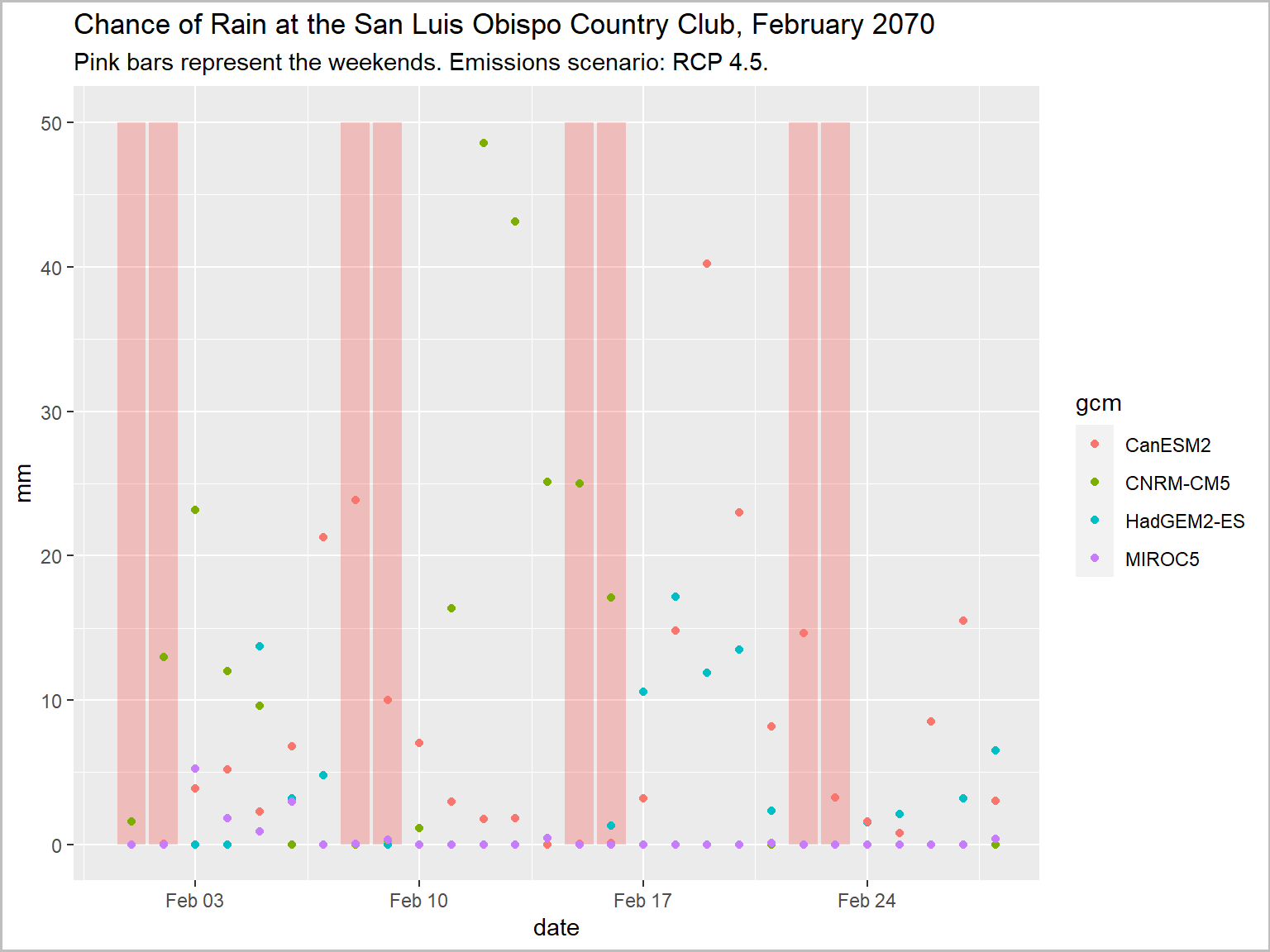
library(caladaptr)
library(dplyr)
library(ggplot2)
library(units)
slo_cap <- ca_loc_pt(coords = c(-120.6276, 35.2130)) %>%
ca_cvar("pr") %>%
ca_gcm(gcms[1:4]) %>%
ca_scenario("rcp45") %>%
ca_period("day") %>%
ca_dates(start = "2070-02-01", end = "2070-02-28")
slo_mmday_tbl <- slo_cap %>%
ca_getvals_tbl(quiet = TRUE) %>%
mutate(pr_mmday = set_units(as.numeric(val) * 86400, mm/day))
feb2070_weekends_df <- data.frame(dt = as.Date("2070-02-01") + c(0,1,7,8,14,15,21,22), y = 50)
ggplot(data = slo_mmday_tbl, aes(x = as.Date(dt), y = as.numeric(pr_mmday))) +
geom_col(data = feb2070_weekends_df, aes(x = dt, y = y), fill = "red", alpha = 0.2) +
geom_point(aes(color=gcm)) +
labs(title = "Chance of Rain at the San Luis Obispo Country Club, February 2070",
subtitle = "Pink bars represent the weekends. Emissions scenario: RCP 4.5.",
x = "date", y = "mm") +
theme(plot.caption = element_text(hjust = 0))
By definition, climate is weather averaged over 30+ years.
Climate models are designed to capture trends in climate.
⇒ If you’re not averaging at least 20-30 years of data, you’re probably doing something wrong.
There is variability among models.
The biggest source of uncertainty (by far) is the future of emissions.
Both are important.
Variability can be within and/or between models.
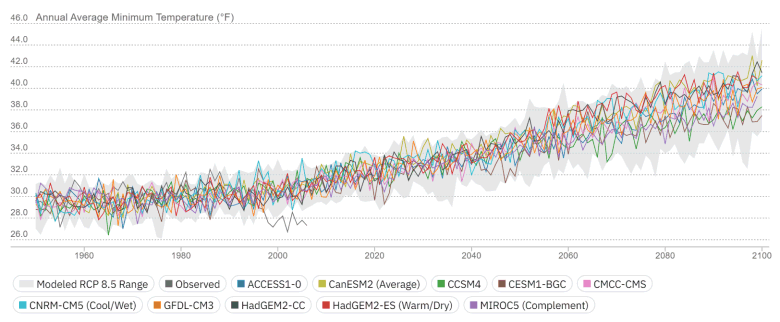
Climate analogue: Where can I go right now to see the climate that my city will face in 50 years?
How should we compare the past to the future?
Observed historic record and modeled future - different animals
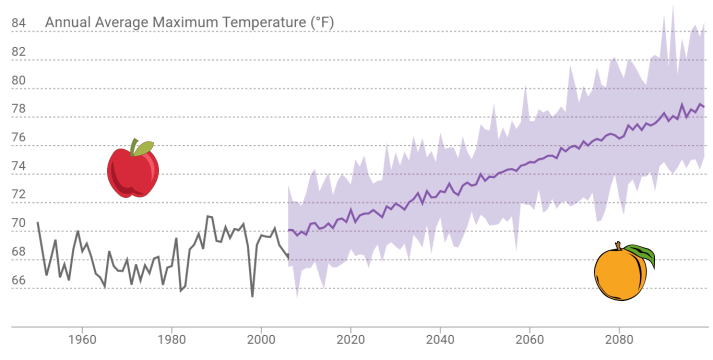
Model historic climate and modeled future - comparable
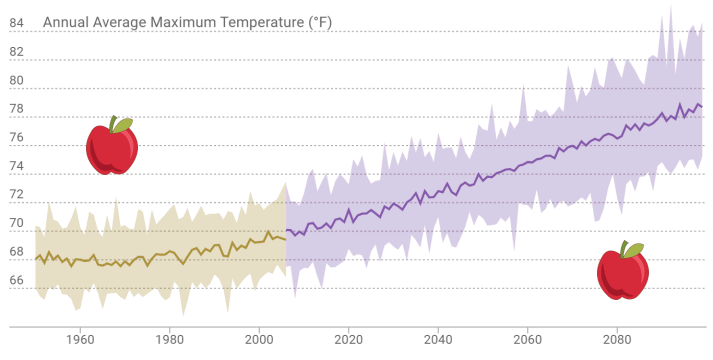
caladaptR comes with a Raster Series Catalog
For each raster series the catalog will list its:
The catalog can be retrieved using ca_catalog_rs() (returns a tibble).
The best way to browse the catalog is with RStudio’s View pane. You can then use the filter buttons to find the raster series you want.
Cal-Adapt data always comes down in a “long” format:
To make useful plots, maps, and summaries, you often have to ‘munge’ or ‘wrangle’ the data, which may include:
Fortunately you have a very robust toolbox:
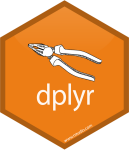 cheatsheet |
 cheatsheet |
 cheatsheet |
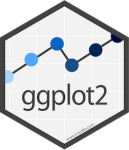 cheatsheet |
Useful functions
Qtn. How do I know what data wrangling is needed?
Ans. Work backward from your analysis or visualization functions.
In Notebook 2, you will:

The Shiny package allows you to create browser-based apps that run R in the background.
You need to know to R, but you don’t need to know JavaScript, HTML, CSS, network protocols, etc.
Can run them locally or online
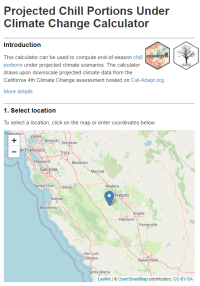
Examples:
library(caladaptr.apps)
## Launch the time series app
ca_launch("timeseries")
## Launch the projected chill portions app
ca_launch("chill")In Notebook 3, you will:
caladaptr.apps package